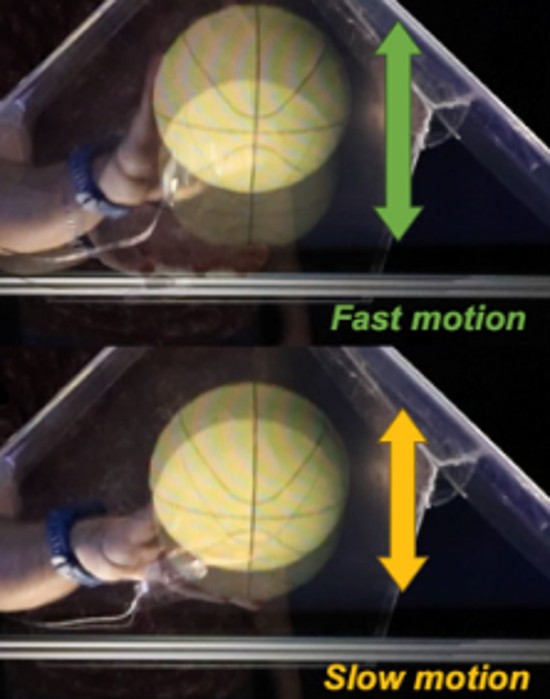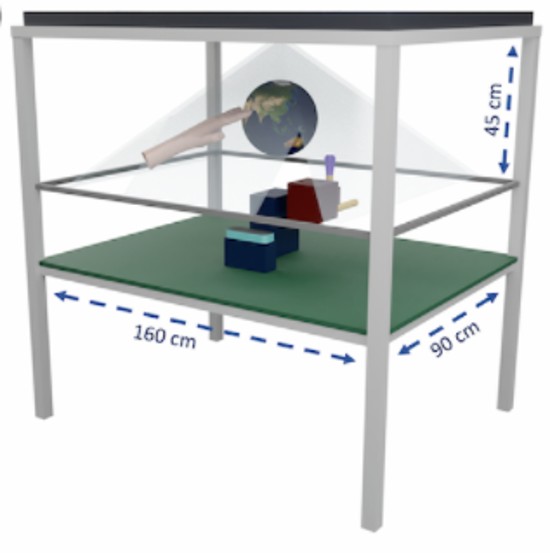Holographic projections a la Star Trek are one step closer to reality based on recently published research that appeared in the journal Advanced Intelligent Systems just a few weeks ago. The paper entitled Pseudo-Hologram with Aerohaptic Feedback for InteractiveVolumetric Displays is the product of Professor Ravinder Dahiya and a team of researchers from the James Watt School of Engineering at the University of Glasgow. It describes the use of a haptic device to create the sensation of touch in a three-dimensional environment. The interaction within the space is a 21st century equivalent to the science fiction holodeck.
What is haptic feedback? It is the sensation of touch, one of our five senses. We experience it when using smartphones today. When you put your alert on vibrate, you can feel that someone is messaging you. And many smartphone applications provide haptic feedback as a feature.
But going from haptic feedback in a two-dimensional object to one that is three-dimensional and virtual is a “dimensional” leap. You can achieve this in several ways. One is aerohaptics, an air-based haptic feedback system to create a sense of touch without wearing any enabling apparatus such as a headset. Another is to use focused ultrasound to achieve a similar result.
The leap motion controller used by Professor Dahiya comes from Ultraleap. Ultraleap has a competing haptic feedback solution that combines small ultrasound speakers emitting precisely directed waves sequenced by computer algorithms to arrive at the same point in space and time to create tactile effects that a hand can detect in mid-air. In other words, virtual touch.
Aerohaptics does it differently by involving the pairing of 3D-display technology with directed airflow to create virtual touch. The University of Glasgow’s Bendable Electronics and Sensing Technologies (BEST) research group came up with the idea.
Their demonstration is a holographic bouncing basketball hovering in space that anyone can interact with. The aerohaptic feedback lets participants feel the virtual ball as it rolls off their fingertips. They can bounce it, slap it against their palms, and apply varying force and direction to where and how it goes. An illustration of the developed system can be seen at the top of this article.
Using airflow and varying its intensity is a novel approach to creating a virtual sense of touch. As you attempt to bounce the basketball using harder and faster movements the haptic feedback increases. More subtle movements cause the airflow to diminish and the ball to move appropriately.

So which is better? Ultrasound haptics or aerohaptics?
The advantage goes to the latter over the former for two reasons.
- Although both deliver mid-air haptic feedback without having to wear anything, pressurized airflow as a feedback mechanism is far less expensive than a raft of ultrasound speakers controlled by advanced computer algorithms.
- And pressurized airflow allows for better scaling to a much larger space without the complexity and cost of multiple ultrasound speakers.
Professor Dahiya sees the technology as a precursor to the Trekkian holodeck. He notes that aerohaptics creates “a convincing sensation of physical interaction on users’ hands at a relatively low cost….adding temperature control to their airflow to deepen the sensation of interacting with hot or cool objects” would be the next step and is on the drawing board. But he doesn’t have a solution yet for his holodeck virtual objects displaying sentience and following plot lines.
The future uses he does see “could form the basis for many new applications…such as creating convincing, interactive 3D renderings of real people for teleconferences,” or “it could help teach surgeons to perform tricky procedures in virtual spaces during their training or even allow them to command robots to do the surgeries for real.”
















